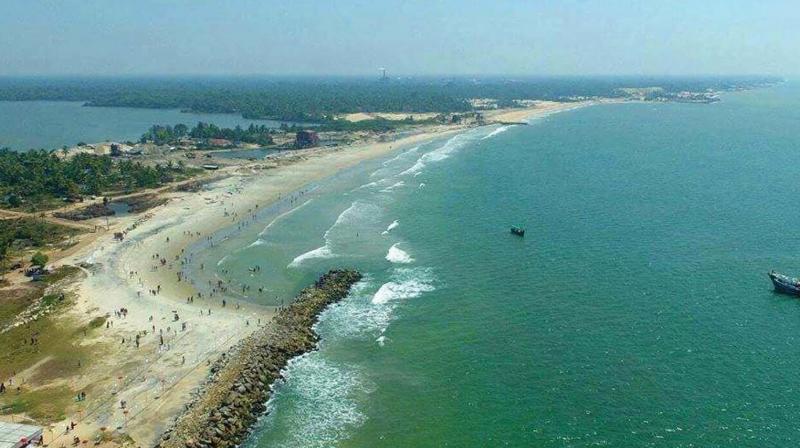Kerala’s Alappad coastal village, set on the Arabian Sea, is restive – a protest gradually gaining more steam against sand mining in the coastal waters of the Arabian Sea, and also more prominently, on the beach for decades. Set against two monstrosities — sand mining and sea erosion — the local people’s plight is miserable.
The large-scale extraction of mineral-rich beach sand, known locally as Karimanal or black sand, is done mostly for industrial purposes on a commercial basis by two public sector undertakings – Indian Rare Earths (IRE) of the central government and the Kerala Minerals and Metals Ltd (KMML) of the state – through their agencies during daytime. After dusk, illegal private agencies step in to remove sand from the same localities, and they make a fortune out of it. At the receiving end of all these indulgences are the hapless coastal inhabitants. Sand is virtually slipping from under their feet, and the Sea is increasingly on the land-grab mode.
The coastal stretch along Kollam district is the state’s main base for rare mineral-rich sand, regularly deposited by waves on the ascending and descending mode. Its extraction means huge income to the government. The area is also vulnerable to sea erosion, which has repeatedly led to large-scale displacements of families from the village in recent decades. Local residents sense a link between the two. Up in arms against the mining now are the over 7,500 families spread over an 8.9sqkm of the coastal village – the space of which has, over the years, seen a huge shrinking from what was recorded in 1955 at 89sq km. In other words, the village today is just one-tenth of what it was half a century ago.
Understandably, the inhabitants are deeply worried and at their wits’ end. The two major natural calamities in recent years, the Indian Ocean Tsunami of 2004 and Ockhi 2017, did them in. The huge waves from the turbulent sea that ate up landmass along the 700km Kerala coast at several places added to the plight of the residents of Alappad in specific. For, the state’s highest number of deaths in that tsunami was reported from this village, which jutted out to the sea.
There is substance in the complaints that the IRE and KMML are doing the sand mining in an unscientific manner. Worse, vested interests are at work even with these government entities. A big question is also about the excess sand taken out of the mining areas. Once the black sand or mineral is extracted, the larger part of the normal sand taken from the area is not put back to the beach. This, locals allege, is quietly taken to cities like Kochi by the sand mafia to use in construction works. The more the sand goes out of the coastal stretch, the more the scope for — and fear of — sea erosion.
Grama Panchayat president P Saleena echoes the general mood when she says unscientific ways of mining like Sea Wash being undertaken by IRE through sub-agencies should stop and the government must come up with funds for erection of sea walls by piling of boulders. Environmental activists like KC Sreekumar have threatened to extend the agitation along the beach upto Alappuzha, the adjoining district, where too coastal inhabitants are facing similar situations of illegal sand mining and sea erosion. Notably, the state’s highly-energetic construction industry is starved of river sand, with the result that treated or even untreated beach sand is largely drawn in for the purpose.
The interesting part is that most state bureaucrats and local politicians like the MLA, the district minister and others of different parties have been consistently supporting the mining activities on the beach. This may not sound out of the ordinary for people in Orissa as we too have been subjected to gross exploitation by a similar bureaucratic-political nexus that has actively been supporting the mining lobby. Here too, the mining activities have extracted a heavy toll on the poor tribals that have been inhabiting the wealthy lands for centuries.

